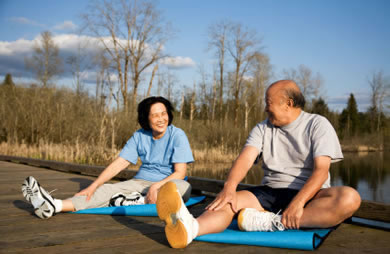|
If it is football season, it must also be time for tailgating. There are several stories related to the origin of the tailgate party. Some believe it first started back in 1869 with the first college football game between Rutgers and Princeton. Travelers arrived at the game via horse drawn carriages and cooked food prior to the game at the "tail end" of the horse. My in-laws would likely believe another version, which states tailgating started in Green Bay, Wisc., in 1919 with the start of the Packers, when farmers backed their trucks around the edge of an open field before a game. It is believed that fans dropped their truck "tailgates" to sit and watch the play while enjoying their baskets full of food they brought to eat. While it is not that important how it got started, it is important to recognize that in today's society, tailgating IS a part of the football experience for many people. Here are some important things to keep in mind for your next tailgate event. Of course it is best to plan ahead for your tailgate event and make sure you are selecting the best cookout foods. It is equally important to think about basic food safety recommendations so no one in your party ends up with an unexpected food borne illness that sends them to the sidelines. If you are a child of the '80's like myself (back when we still used Styrofoam containers), you will likely remember the McDonald's McDLT that kept the hot side hot and the cool side cool. Well, they had the right idea when it comes to food safety. If you are taking hot foods such as soups, stews or chili to your tailgate, use an insulated container that will hold the food at the correct heated temperature of 140 degrees or above for several hours. It is equally important to make sure all raw meats such as beef patties, chicken and sausage are transported and stored in an insulated cooler until cooked. It doesn't matter if you use a cooler with several inches of ice, an old milk jug filled with frozen water or frozen gel packs as long as the cooler temperature is able to maintain a 40 degree temperature or below. It is also important to properly chill all salads such as potato or pasta salad during transport and tailgate set up as well. You may want to purchase a refrigerator thermometer to keep in your cooler so you can properly monitor temperature especially on warmer days or at sunny tailgate locations. Use separate insulated coolers, one for uncooked meats, and another for ready-to-eat foods, to reduce your risks of cross contamination from uncooked meat juices that may spill during transport. It is also vital to remember that once food has been removed from the grill or cooler, it should not sit out for more than 2 hours. If the outside temperature is greater than 90 degrees, the time is reduced to no more than one hour. Foods left out for longer than this period of time should be thrown away and NOT put back in an insulated cooler for storage during the game and later use. It will take a long period of time for these items to reach a temperature below 40 degrees which increases the risk of bacterial growth during that time which can still result in food borne illness if you serve it again. To reduce waste, be sure to cook only the amount needed and try to accurately estimate how much food is necessary before packing for the tailgate. It is better for food safety and storage as well as your waistline if you have slightly less food than needed instead of slightly more. I hope that planning and being food safe will help you have an enjoyable tailgate experience next time your favorite team is ready to kick-off. Do you enjoy tailgating before sporting events? Have you previously paid close attention to food safety issues while tailgating? |
Popular EntriesMore From SparkPeople
|















